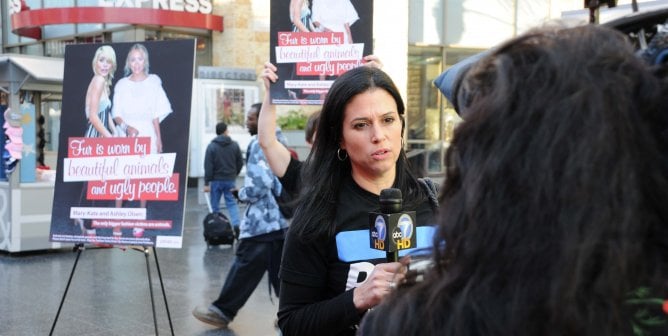Tesla’s Leather Use Comes Under Fire From PETA as Anti-Environmental
CEO Elon Musk to Face Shareholder Question Urging Him to Drop All Planet-Wrecking Cowhide From Car Interiors
For Immediate Release:
June 8, 2015
Contact:
Sophia Charchuk 202-483-7382
There’s no such thing as an eco-friendly leather seat. This is the point that PETA will make at Tesla Motors‘ annual meeting on Tuesday. A PETA member who owns stock in the company will call on CEO Elon Musk to switch to cloth or synthetic seats, which don’t pollute waterways with cancer-causing tannery toxins like leather does. As PETA—whose motto reads, in part, that “animals are not ours to abuse in any way”—will point out at the meeting (and has the video to prove), leather production is not only cruel to animals but also devastating to the environment, contributing to climate change, land devastation, pollution, and water contamination.
When: Tuesday, June 9, 2 p.m.
Where: Computer History Museum, 1401 N. Shoreline Blvd., Mountain View
“Until cows are left out of the equation, Tesla’s mission to produce an eco-friendly car that succeeds in style, speed, and sophistication falls short—but it’s an easy fix,” says PETA President Ingrid E. Newkirk, a car enthusiast. “PETA is calling on CEO Elon Musk to go the extra mile to help the planet by offering only Earth-friendly, leather-free interiors in Tesla cars.”
Animal agriculture—which includes the leather industry—is responsible for 51 percent of all greenhouse-gas emissions, according to the Food and Agriculture Organization of the United Nations. Turning animal skins into leather requires 130 different chemicals, including cyanide, and people who work in and live near tanneries suffer from exposure to these toxic chemicals. Leather production also squanders valuable natural resources, including up to 15,000 gallons of water per ton of hides.
Leather production is also extremely cruel. The millions of cows whose skins are turned into leather endure branding, tail-docking, dehorning, and castration—all without painkillers. The animals are loaded onto crowded trucks and transported through all weather extremes to slaughterhouses, where improper stunning means that many are skinned while they’re still alive.
For more information, please visit PETA.org.


